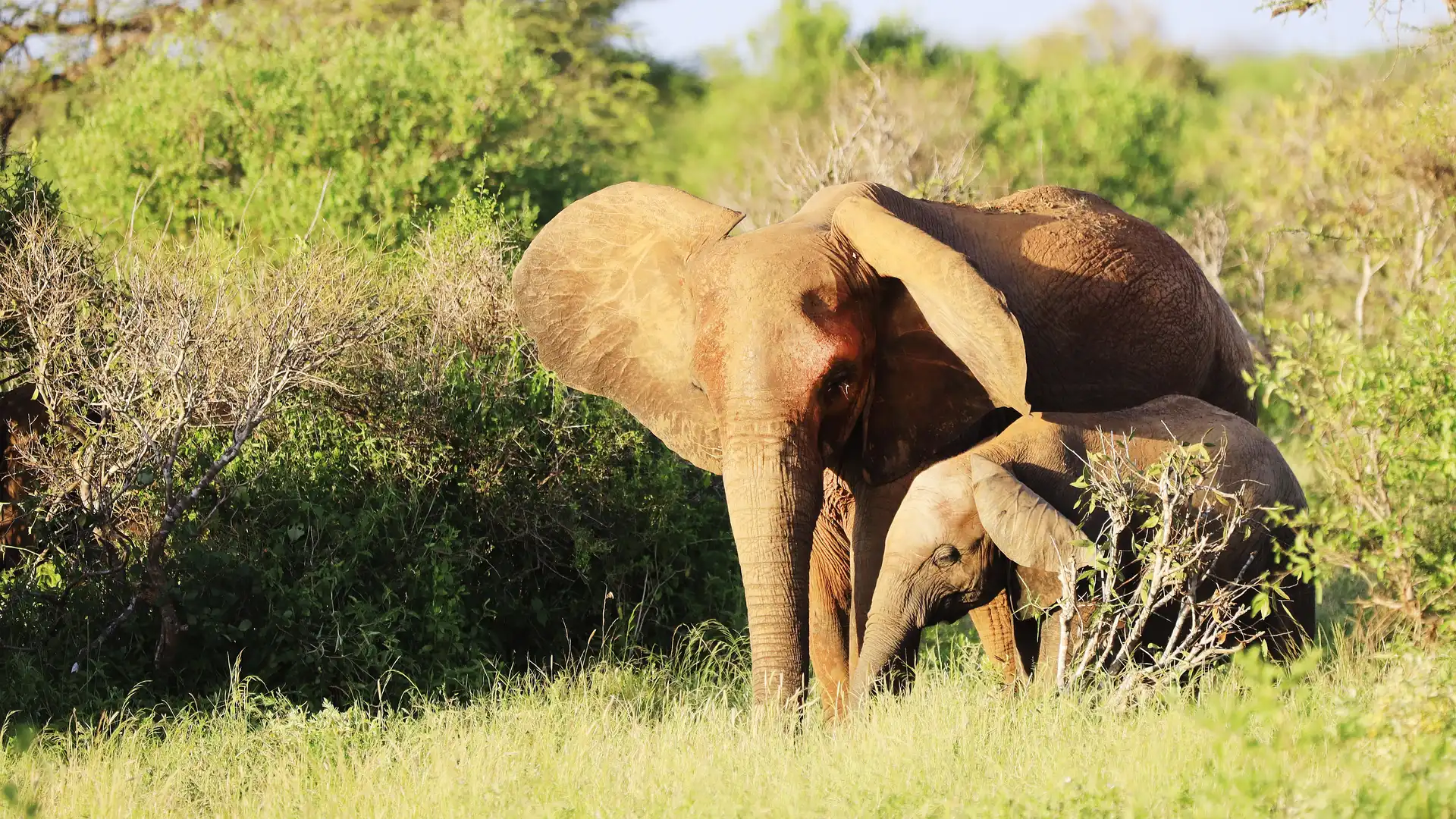
Planning your first safari in Kenya feels like a dream come true. The excitement of seeing wild elephants strolling, lions dozing in the shade, and giraffes browsing treetops is real—and unforgettable.
But before you hop into that safari jeep, there are a few important things to remember. Good etiquette isn't just about following rules; it’s about respecting wildlife, nature, and the people who live alongside them. Do this well, and your safari will become a richer, more meaningful experience—for you and for the animals.
Here are the key tips to keep in mind before your safari journey begins.
Keep your distance. It’s tempting to lean out and inch closer to herds or a pride napping under a tree. But wildlife deserves their space. Staying farther back keeps animals calm—and protects you too.
Your guide knows the safe distance for each animal. Trust them—it helps wildlife feel less stressed and ensures safer wildlife encounters.
Be quiet and calm. Loud chatter, sudden movements, or phone ring tones can spook animals or chase away fine moments. Whisper, move slowly, and let nature's soundtrack—bird calls, leaves rustling—take the lead.
Only certain vehicles are allowed off-road, and only your guide should be behind the wheel. No hopping out to pose for a picture or chasing a scene—stick with the group, and enjoy the ride.
Also, keep your voice low and your camera clicks discreet. Everyone’s there to soak in the experience, and a bit of calm and courtesy goes a long way.
Your safari guide is more than just a driver. They’re skilled spotters, animal behavior experts, and wildlife safety specialists.
Follow their advice—like when to stay silent, when to peer over the window, or when to slow down. They’ve walked the paths, read animal signs, and know how to create unforgettable moments while ensuring safety and respect for nature.
If an animal approaches the vehicle, stay inside. Giraffes may peer in, elephants might wander past, or a lioness could nap just steps away. No need to poke your camera out or wave—stillness helps them feel safer, and the moment stays authentic.
Approve any wildlife interaction with a nod, a camera click, or just a quiet smile. Nature thrives in calm presence.
That phone you keep in your pocket? Switch it to silent. Sounds carry across plains and disturb not just animals, but the magic of being in the wild.
And yes, even silent modes can vibrate energy across the jeep. Tread softly, frame your photos quietly, and let the wilderness shine without digital noise.
Safari spots are breathtaking, and many depend on conservation efforts and funding from tourism to survive. Respect the park by following the age-old rule: take nothing but pictures, leave nothing but footprints.
Put litter—including fruit peels and sugarcane—back into your bag, and follow your guide’s advice on where to eat or stretch.
Safari companies often benefit nearby communities through jobs, school support, or health projects. Treat local communities with respect and kindness—those smiles, handshakes, or small chats go a long way in celebrating Kenyan hospitality.
Buying local—like honey, beaded crafts, or home-brewed juice—is great too. It’s a small gesture that helps communities grow without losing traditions.
Wear neutral, light-toned clothes—beige, olive, khaki—so you blend with the savannah backdrop. Bright colors spook animals, and dark clothes absorb the sun in ways you don’t want on a hot day.
Bring a wide-brimmed hat and sunscreen. Even in the shade, sun can sneak up on you.
On the camera front, bring a zoom lens of 200mm or more if you can. But don’t get lost behind your viewfinder. See the herd, feel the moment, then click. That’s where true safari magic happens.
Safari is not a show with guaranteed scenes. There may be long drives, soft dusty wind, or just one fleeting bird call. That’s all part of the charm.
Sometimes all you’ll see is a track, a paw mark, or the white tail of an antelope bounding away. But often, the deep quiet of dawn or sunset, a giraffe bending to drink, or the distant roar of a lion—these are the moments that live in memory longer than anything else.
Patience, presence, and openness—those are the real safari essentials.
After the dust settles and you head back, take a moment before posting your sunset photo or wildlife video. Reflect. What did you learn? What did it feel like to be in that space, behind that jeep, watching life in motion?
When you share with others, don’t just show photos—share the joy, the quiet, the hush of dawn air or rib-thrill of thunder off the plains. That’s the heartbeat of safari.
Your first safari in Kenya is more than a bucket-list trip—it’s a connection to something ancient, wild, and deeply meaningful. Wildlife etiquette isn’t about rules—it’s about respect: for animals, for land, for culture.
Let silence be your guide, curiosity your companion, and kindness your companion. Kenyan safaris bring you into nature’s theater—but only if you’re ready to listen, see, and tread gently.
May your first safari stay with you like a deep, joyful breath—and may it inspire you to honor the wild side of life, always.